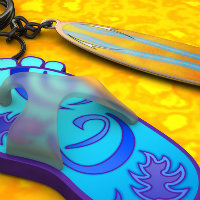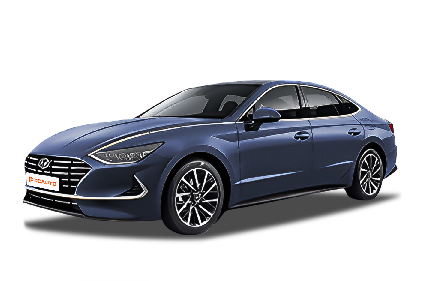Q
Is Sonata a sedan or an SUV?
The Sonata is a sedan, not an SUV. It belongs to the D-segment, which is in the mid - to full - size category among sedans. Sedans typically adopt a traditional three - box design, with separate compartments for the engine, passengers, and luggage. Sonata follows this pattern with two rows of seats accommodating five people, and a dedicated 510 L trunk for storage.
Compared with the taller and more upright body style of SUV, Sonata's design focuses more on smooth lines and aerodynamic performance. This makes Sonata well - suited for daily commuting and long - distance driving, and it also appeals to those who prefer a sedan - like driving experience with a lower center of gravity and better handling.
Special Disclaimer: This content is published by users and does not represent the views or position of PCauto.
Related Q&A
Q
What is the life expectancy of Hyundai Sonata Hybrid?
The service life of the Hyundai Sonata Hybrid can vary depending on multiple factors. Generally speaking, the battery of the Sonata Hybrid usually lasts about 5 years. As for other components, Hyundai offers a 5 - year or 300,000 - kilometer warranty for the whole vehicle, which reflects the expected durability of the vehicle under normal use conditions. The warranty periods for some core components, such as the power battery assembly, drive motor assembly, motor controller assembly, and vehicle controller assembly, are even longer, sometimes up to 8 years or 150,000 kilometers. Regular maintenance, good driving habits, and usage conditions all play important roles. If properly maintained, serviced on time, and driven carefully, this car has the potential to serve you for over 10 years and cover a mileage of as much as 200,000 kilometers or more.
Q
Which model of Hyundai Sonata is the most expensive ?
Currently, the most expensive model of Hyundai Sonata in Malaysia is the Sonata N-Line version, with an official price of approximately RM218,888 (excluding insurance). This high-performance version is equipped with a 2.5L Turbo GDi four-cylinder engine, capable of outputting 290 horsepower and 422 Nm of torque. Paired with an 8-speed wet dual-clutch transmission and front-wheel drive, it can accelerate from 0 - 100 km/h in just 6.2 seconds.
Compared with the standard Sonata (equipped with a 1.6L Turbo or 2.0L naturally aspirated engine), in addition to its powerful performance, the N-Line is equipped with a sport-tuned suspension, 19-inch wheels, an exclusive N Line exterior kit (including a more aggressive aerodynamic design and quad exhaust pipes), and an all-black interior with red stitching, giving it an overall sporty coupe style.
Although it's price is high, the N-Line version offers a comprehensive configurations, including the advanced Hyundai SmartSense active safety system (such as SCC Smart Cruise Control and FCA Forward Collision Warning), a panoramic sunroof, and a Bose sound system. It's a great choice for consumers who seek both performance and luxury.
Q
How about the speed performance of Hyundai Sonata?
The speed performance varies among different models of the Sonata. The top speed of the 2020 Hyundai Sonata 2.5 Premium can reach 210 km/h, while the top speeds of the 2017 Hyundai Sonata 2.0 Elegance and Hyundai Sonata 2.0 Executive are 200 km/h. These figures reflect the vehicle's potential in terms of power performance. However, in actual driving, it's difficult to reach the vehicle's top speed due to factors such as road conditions, traffic regulations, and driving behavior. For example, the speed limits on ordinary city roads are usually quite low. Although the speed limits on highways are relatively higher, it's not allowed to speed at will. It is recommended that everyone abide by the regulations while driving, reasonably control the speed according to the actual situation, and ensure driving safety.
Q
What's the engine displacement of Hyundai Sonata?
Different models of Sonata have various engine displacements. For example, the 2020 Hyundai Sonata 2.5 Premium is equipped with an engine with a displacement of 2497cc, which can provide ample power to meet the needs of daily driving and some driving scenarios with power requirements. As for the 2017 Hyundai Sonata 2.0 Elegance and Hyundai Sonata 2.0 Executive, their engines have a displacement of 1999cc. Relatively speaking, they may perform better in terms of fuel economy and can also provide stable power output for the vehicle. Engines with different displacements each have their own characteristics. Consumers can choose the model that suits them according to their own driving habits, such as the demand for power and considerations regarding fuel consumption.
Q
What's the service life of Hyundai Sonata's spark plugs?
The service life of the Hyundai Sonata's spark plugs depends on their types. The more affordable nickel alloy spark plugs typically last about 20,000 - 30,000 kilometers. Platinum spark plugs, with better heat and corrosion resistance, can be used for 60,000 - 80,000 kilometers. Iridium spark plugs, known for their high ignition performance, usually have a service life of 80,000 - 100,000 kilometers or even longer.
However, other factors can also have an impact. If the vehicle often drives under harsh conditions such as extreme temperatures, high humidity, and dusty areas, or experiences frequent starting and stopping, the spark plugs may wear out more quickly. Aggressive driving habits like rapid acceleration and hard braking can also increase the engine load and accelerate the aging of the spark plugs. Therefore, although the above are general reference standards, it's very important to regularly check the condition of the spark plugs and follow the vehicle maintenance manual for optimal performance.
Q
Does Hyundai Sonata have spark plug wires?
Yes, Hyundai Sonata is equipped with spark plugs, but it doesn't have the traditional externally exposed spark plug wires. Spark plugs are crucial components in the engine's ignition system, as they generate electric sparks to ignite the air - fuel mixture in the engine's combustion chamber, enabling the engine to operate properly.
With the development of modern automotive technology, many vehicles, including the Hyundai Sonata, have adopted the Distributorless Ignition System (DIS) or the Direct Ignition System (DI). In these systems, the ignition coils are directly installed on top of the spark plugs, providing high - voltage electricity directly to the spark plugs. They no longer rely on the traditional long spark plug wires to transmit high - voltage electricity.
This design reduces electromagnetic interference, improves ignition efficiency and engine performance, and also decreases the likelihood of spark plug wire failures, such as electrical leakage and aging. At the same time, it enhances the overall reliability of the vehicle and its fuel economy.
Q
How many cylinders does Hyundai Sonata have?
Whether it's the regular version or the N-Line version, the Sonata features a 4-cylinder (inline-four) engine layout, which is also a common engine configuration for mainstream mid-size sedans these days. This setup can not only deliver decent power output but also balance it with fuel efficiency. Hyundai has invested lot in developing turbocharged engine technology in recent years. For example, the SmartStream series of engines has optimized combustion efficiency and reduced emissions, enabling the four-cylinder engine to achieve performance comparable to that of a six-cylinder engine. If car owners prefer more potent power, they might need to consider higher-end rear-wheel-drive or all-wheel-drive performance cars. However, for general family use or mild sporty driving needs, the 1.6T or 2.5T four-cylinder engines are good enough for daily driving and highway cruising.
Q
How much does it cost to change Hyundai Sonata's spark plugs ?
The cost of replacing the spark plugs of Hyundai Sonata ranges from approximately RM200 to RM500, depending on the model year, engine type (1.6T or 2.5T), and the brand of spark plugs used (such as NGK, Denso, or original factory parts). A standard 1.6L Turbo engine usually uses iridium or platinum spark plugs, which cost around RM50 to RM150 each. On the other hand, the 2.5L Turbo engine (N - Line version) may require higher - performance spark plugs, which are slightly more expensive (around RM80 to RM200 each).
In addition, labor costs typically range from RM80 to RM150. Dealerships may charge more, providing factory - certified parts. Third - party repair shops offer lower prices, but you need to make sure the technicians perform well in the operation.
The spark plug replacement interval for the Hyundai Sonata is generally between 60,000 and 100,000 kilometers. However, if your vehicle experiences vibrations, has difficulty starting in cold weather, or shows an increase in fuel consumption, you may need to check the spark plugs earlier. It's recommended that owners have technicians inspect the spark plugs during regular maintenance and choose high - quality spark plugs that can withstand high temperatures and resist carbon deposits to ensure optimal engine combustion efficiency.
Q
How many spark plugs does Hyundai Sonata have?
Hyundai Sonata usually has four spark plugs. This is because most Sonata models are equipped with four-cylinder engines, and in gasoline engines, each cylinder is typically assigned one spark plug. Spark plugs play a crucial role in the operation of the engine. They are responsible for igniting the air-fuel mixture in the cylinders, enabling the engine to generate power. For example, the 2020 Hyundai Sonata 2.5 Premium and the 2017 Hyundai Sonata 2.0 Elegance/Executive models are both equipped with four-cylinder engines, and these models all have four spark plugs. Regularly inspecting and timely replacing the spark plugs according to the vehicle's maintenance schedule helps ensure smooth engine operation, good fuel efficiency, and reliable vehicle performance.
Q
How often should I change the spark plugs in my Hyundai Sonata?
The frequency of replacing the spark plugs in your Hyundai Sonata depends on the type of spark plugs installed. Nickel alloy spark plugs are affordable, but they have a short service life. You should consider replacing spark plugs when the vehicle has traveled about 20,000 - 30,000 kilometers. Platinum spark plugs are known for their good heat resistance and corrosion resistance and can be used for 60,000 - 80,000 kilometers. Iridium spark plugs have high ignition performance, and their service life is generally 80,000 - 100,000 kilometers or even longer.
In addition, the operating conditions of the vehicle also affects the service life of spark plugs. If you often drive in harsh environments such as extreme heat, humidity, and dust, or frequently start and stop the vehicle, or have a habit of aggressive driving, the spark plugs may wear out fast, and you may need to replace them early. Regularly refer to the vehicle's owner's manual, as it may provide more specific guidance for your Sonata model.
Latest Q&A
Q
How far can a Honda CR-V go on a full tank?
According to official Honda CR-V specs, the fuel tank holds about 58 liters. Actual range depends on the trim and driving conditions, but generally, the 1.5L turbo model gets around 7.5L/100km combined, so you’re looking at roughly 770km per fill-up. The hybrid version is even thriftier at about 5.5L/100km, pushing range up to around 1050km. Of course, real-world range varies—your driving style, road conditions, and how much weight you’re hauling all play a part. Highway cruising at a steady speed will be more efficient, while stop-and-go city traffic will drink more fuel. For Malaysian drivers, the hot weather means AC is cranked most of the time, which can nudge fuel consumption up a bit. To keep things efficient, regular maintenance is key—check your tire pressure and oil condition regularly. And let’s not forget: planning your route smartly and avoiding aggressive acceleration or hard braking can also help stretch that tank a little further.
Q
Is the Honda CR-V good for long distance?
The Honda CR-V is a great SUV for long drives, especially performing exceptionally well on Malaysia's varied road conditions. Its 1.5-liter turbocharged engine delivers plenty of power along with good fuel efficiency, making it ideal for extended highway stretches. The suspension is tuned more for comfort, effectively absorbing road bumps and reducing driver fatigue during long journeys. The cabin is spacious, with ample rear legroom and a large trunk—perfect for family trips or hauling lots of luggage. The seats offer solid support and nice bolstering to keep everyone comfortable too. On top of that, the CR-V comes with Honda Sensing, which includes adaptive cruise control and lane-keeping assist—features that really boost safety and convenience on long drives. For Malaysian drivers, the CR-V’s reliability and easy maintenance are big pluses. The local dealer network is well-established, and parts are readily available—all important things to consider for road trips. If you often drive cross-state or go on long road adventures, the CR-V’s all-around performance is definitely trustworthy. Just remember to regularly check your tires and brakes to keep things safe out there.
Q
Should I buy a high mileage Honda CR-V?
Buying a high-mileage Honda CR-V requires considering factors like condition, maintenance history, and price. As a generally reliable SUV, the CR-V's engine and transmission can hold up well even with higher miles if properly maintained. However, it's crucial to check for excessive wear on the chassis, suspension, and drivetrain—especially since Malaysia's rainy climate can cause chassis corrosion issues. In the Malaysian market, used CR-Vs hold their value relatively well, so a high-mileage one can still be a solid pick if priced right and in good shape. Just make sure the seller provides full service records and arrange for a professional mechanic to inspect it. Also, the CR-V stands out for fuel efficiency and practical space among its class, making it great for families. But higher-mileage units may need more frequent upkeep, so budget for replacing wear items like shocks, tires, and the timing belt. If your budget allows, compare with lower-mileage used CR-Vs or other brands in the same segment to ensure you get the best fit.
Q
How many miles can a BMW Series 5 last?
The BMW 5 Series, as a luxury sedan, can typically clock up 200,000 to 300,000 kilometers or more with proper care and maintenance. Its actual lifespan really hinges on your driving habits, how often you service it, and let's not forget Malaysia's road conditions and climate. Sticking to regular oil changes, swapping out filters, maintaining the brake system, and following the manufacturer's recommended service schedule will definitely help your 5 Series go the distance. Malaysia's hot and humid weather can take a toll on rubber components and electronics, so it's smart to keep an eye on those parts. Also, using genuine or high-quality parts and steering clear of cheap engine oil will go a long way in keeping your car performing well and reliable. The 5 Series is known for its solid engineering and durability, and plenty of owners have kept theirs running strong for over 15 years with good upkeep. If you're planning to hold onto it for the long haul, I'd recommend regular professional check-ups at authorized service centers to make sure it stays in top shape.
Q
What is the diesel engine in the BMW 5 Series 2024?
The 2024 BMW 5 Series in the Malaysian market is expected to come with an upgraded B47 2.0-litre four-cylinder turbocharged diesel engine. Renowned for its efficiency and low emissions, this powerplant likely delivers between 190 to 200 horsepower and a robust 400 Nm of torque. Paired with the 8-speed Steptronic transmission, it strikes a solid balance between performance and fuel economy, making it a great fit for both long highway drives and city commutes around Malaysia. BMW's diesel tech focuses on clean efficiency, using common-rail injection and variable turbocharging to meet EU6d emission standards, while keeping maintenance costs relatively reasonable. If you're considering a diesel, it's worth keeping an eye on the Malaysian government's policies regarding diesel vehicles, like road tax and potential changes to fuel subsidies. That said, the diesel engine's strong torque really shines in tropical climates and hilly terrain. Rivals like the Mercedes E-Class or Audi A6 offer similar diesel options too, so it's smart to test drive and compare based on your personal driving style and budget.
View MoreRelated News

In Malaysia, which sliding door MPVs are available?
MichaelOct 30, 2025

Modern Ioniq 5 N Lands in Malaysia: Track-Level Performance Electric Vehicle is Here, Priced Possibly Below RM 400,000?
JohnSep 10, 2025

Hyundai's Big Return to Malaysia: Top 5 Models Expected
MichaelMay 30, 2025

580,000 km & 87.7% Battery Health: Ioniq 5’s Incredible Durability
MichaelMay 6, 2025

Revolutionizing Hybrids: Hyundai’s New System vs. Toyota's Hybrid System
Kevin WongApr 22, 2025
View More















Pros
Cons